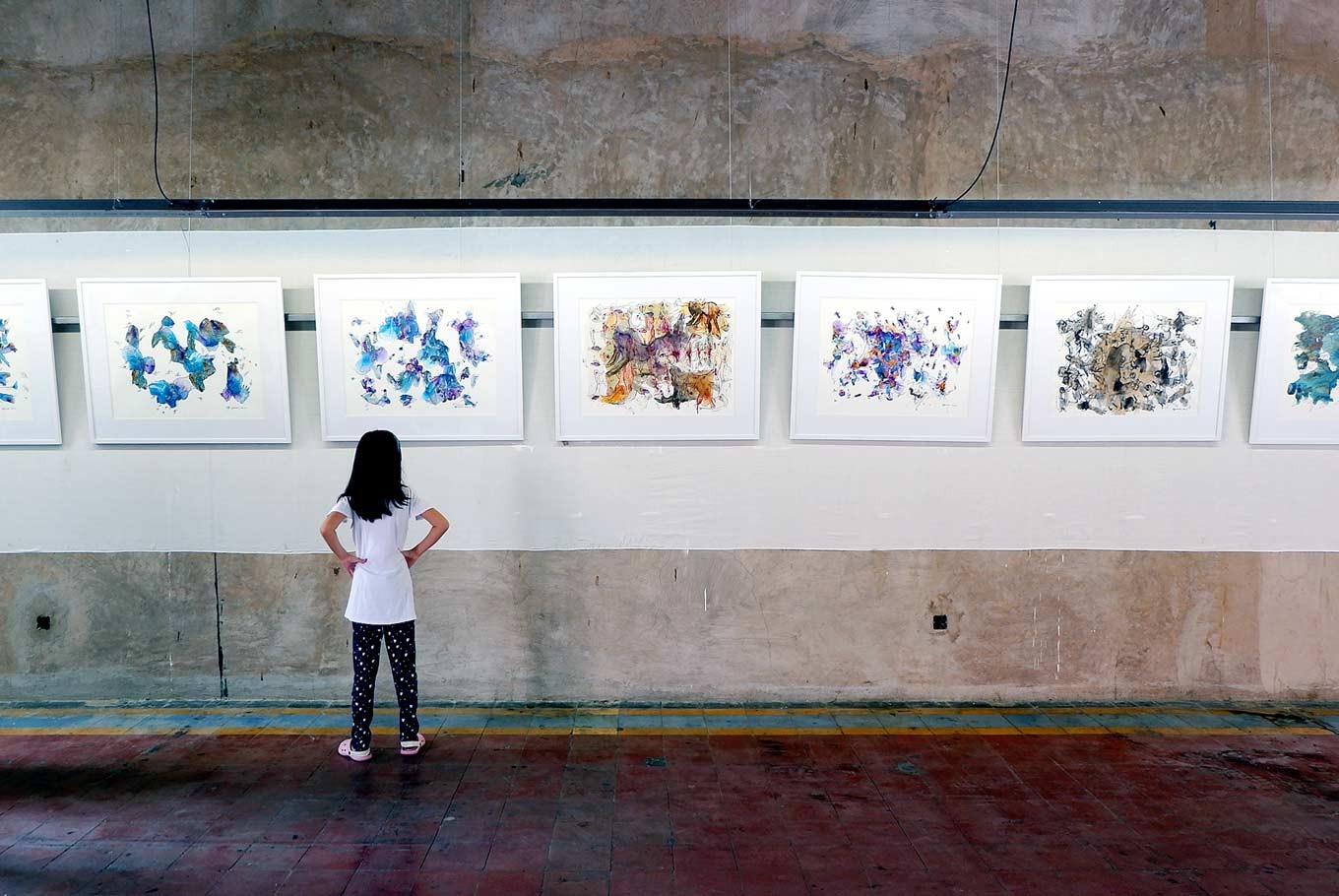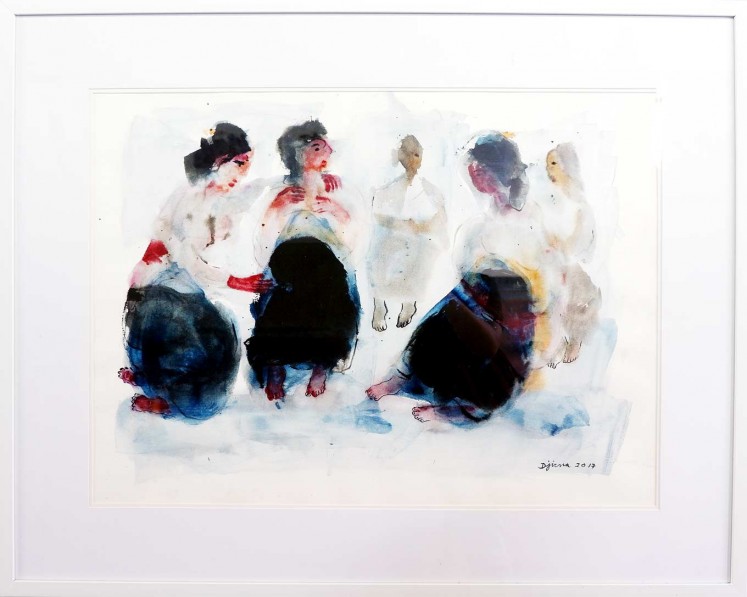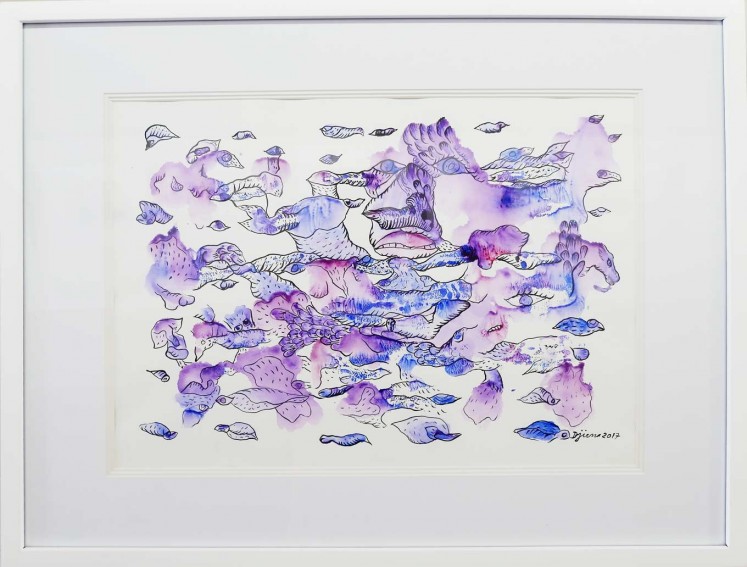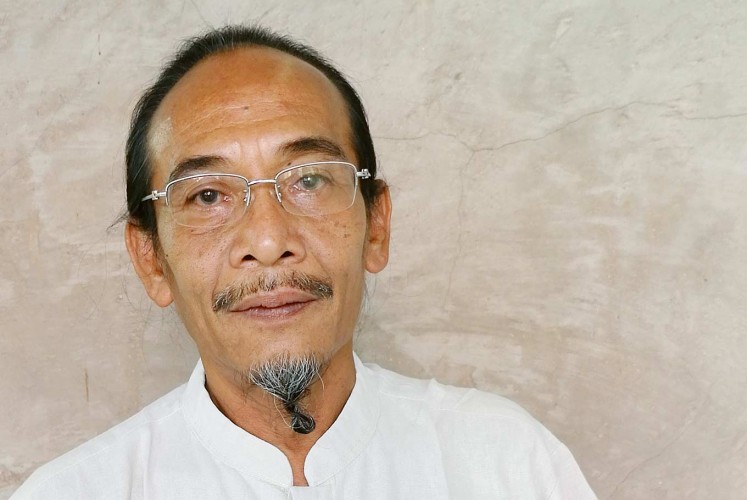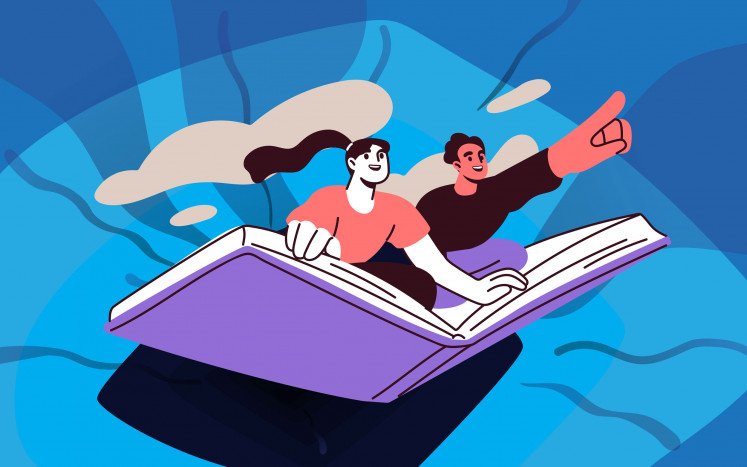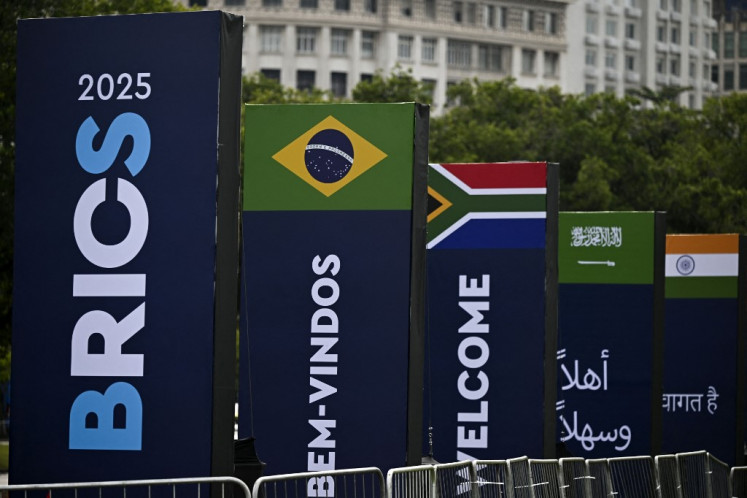Popular Reads
Top Results
Can't find what you're looking for?
View all search resultsPopular Reads
Top Results
Can't find what you're looking for?
View all search resultsI Made Djirna: Paints his feelings
Change text size
Gift Premium Articles
to Anyone
For renowned Balinese artist I Made Djirna, his paintings mirror his feelings.
Balinese artist I Made Djirna closely followed news reports about the volcanic activity of Mount Agung, which had forced tens of thousands of people in Bali to evacuate.
His house in Ubud might not have been in the danger zone, but he could not rest thinking about the possible eruption that would have harmful effects across the island. After learning that the volcano’s status was elevated from level three “alert” to level four “danger” in late September, Djirna made four watercolor paintings to express his anxiety.
“That reminded me of my childhood in 1963 when the mountain erupted. I draw what I feel,” the 60-year-old said, recalling that his family suffered from food shortages after the eruption.
The four paintings are part of his 45 paintings displayed in an exhibition, entitled Transparan (Transparent), at Historia café in Kota Tua, West Jakarta, from Nov. 5 to Nov. 19.
Since 1978, Djirna, who is also a sculptor, has held six solo art exhibitions and taken part in over 24 joint exhibitions at home and abroad, but he says, the current exhibition is special because it is his first solo painting exhibition.
Transparan curator Asikin Hasan said Djirna’s paintings were mind-blowing because he used his intuition and the paintings displayed his impressive skills in playing brushstrokes in watercolor. His works are also open to interpretation and spark the imagination.
Chatting: I Made Djirna depicts the life of Balinese women in one of his paintings. (JP/A. Kurniawan Ulung)“When wielding his brush, he is like a trained samurai warrior who can handle his sword quickly and precisely,” Asikin said.
He said the exhibition showed the characteristics of Djirna, who does not want to label the style of his painting in one specific genre.
“There are abstract paintings, but there are also paintings with decorative aspects,” Asikin said.
In a painting about the animal world, Djirna shows his skills in drawing strong and flexible lines. Shapes resembling different animals can be distinguished and identified even though they are created through a single stroke.
In other paintings, the pressure used to draw lines is not expressive, which results in unclear objects whether they are objects, humans or animals.
“When he draws clouds, for example, they look like animals chasing each other,” Asikin said. “He has strong associative abilities.”
In some works, Djirna shows minimalist characters, for which he combines a sweep of expressive tendencies with strong and sharp line strokes. His paintings mostly portray specific body parts, such as the head, face, eyes and lips, because he says that they are the most recognizable and remembered parts of any living thing.
Born into a farming family in Kedewatan village, Ubud in 1957, little Djirna liked to draw puppets either on paper or on house walls because he liked to watch puppet shows.
I see you: I Made Djirna often takes inspirations from certain body parts, such as the head, face, eyes and lips. (JP/A. Kurniawan Ulung)At that time, the style of Djirna’s paintings was influenced by the Young Artist school, which was created and developed by students of Dutch-born Indonesian painter Arie Smit, who lived in Ubud in 1960s.
In 1978, he moved to Yogyakarta to continue his studies at the Indonesian Academy of Arts (ASRI), which was the first fine-arts campus in the country and is now known as the Indonesian Art Institute (ISI). He was among the first few Balinese artists to study art in universities in Java. Previously, renowned painter I Nyoman Gunarsa and prolific artist Made Wianta studied in the ISI.
After graduating in 1985, Djirna became more creative and instrumental. When making artworks, he refuses to follow common standards, but still respects Balinese tradition and customs.
Asikin said Djirna was unique not only in his artwork but also in his behavior.
When visiting Djirna’s studio in Ubud, he felt an unusual atmosphere because he saw rocks, wood and statues, which all were treated like archeological objects. The artist had picked them up from rivers, beaches and other places.
For renowned Balinese artist I Made Djirna, his paintings mirror his feelings. (JP/A. Kurniawan Ulung)For the Djirna these things are not inanimate objects. They are his friends, who have stories and histories.
Asikin understands that the artist has a deep concern for social issues, although he does not like to express criticism explicitly through his works. He does not mind if some people say that Djirna’s paintings are hard to understand.
For Asikin, an artwork is considered good if it can confuse people because it will drive them to look for answers to questions that pop up in their minds.
“A good painting always inspires observers to develop it themselves because each artwork contains an aspect of intellectuality,” he said.

